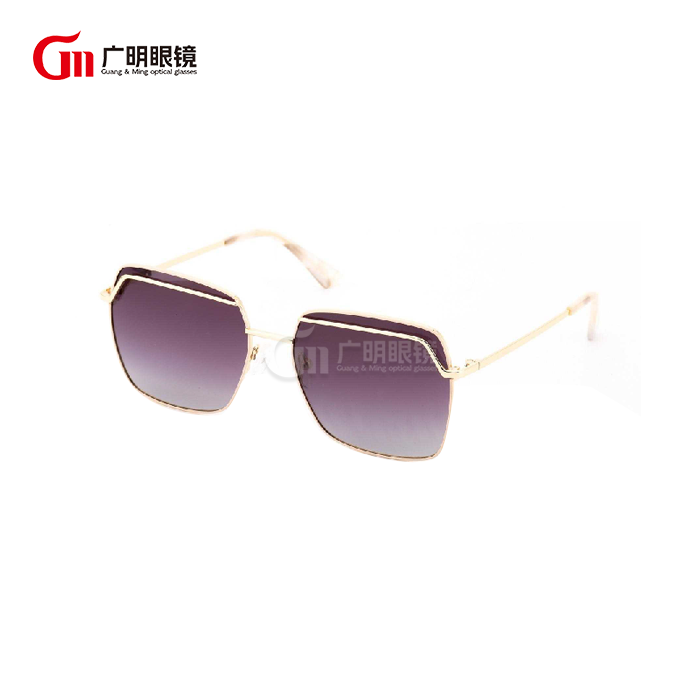What Lens Colors Are Available for Hexagonal Flat Sunglasses?
In the ever-evolving world of eyewear fashion, hexagonal flat sunglasses have emerged as a distinctive and stylish accessory that combines geometric precision with contemporary design. This comprehensive guide delves deep into the fascinating realm of lens colors available for these uniquely shaped sunglasses, exploring the aesthetic, functional, and technological aspects that make each lens color a carefully crafted choice for fashion-forward individuals.
Are Hexagonal Flat Sunglasses Compatible with Different Lens Color Technologies?
How Do Lens Color Technologies Impact Optical Performance?
Professional optical engineers have developed advanced lens color technologies that go far beyond mere aesthetic preferences. For hexagonal flat sunglasses, lens color selection involves complex considerations of light transmission, visual clarity, and environmental adaptation. The unique hexagonal frame shape provides an innovative canvas for demonstrating how different lens colors interact with light and enhance visual perception.
Professional-grade lens color technologies for hexagonal flat sunglasses incorporate sophisticated optical coatings and specialized pigmentation processes. These advanced techniques ensure that each lens color offers more than just visual appeal. Manufacturers like Wenzhou GuangMing Glasses Co., Ltd. utilize cutting-edge research to develop lens colors that provide optimal visual performance across various lighting conditions.
What Scientific Principles Determine Lens Color Effectiveness?
The scientific foundation of lens color selection for hexagonal flat sunglasses involves intricate understanding of light wavelengths, spectral transmission, and human visual perception. Optical scientists carefully analyze how different molecular structures in lens pigments interact with sunlight, creating unique visual experiences for wearers of hexagonal flat sunglasses.
Research demonstrates that lens color selection is not merely a cosmetic decision but a complex interplay of physics, materials science, and human visual ergonomics. Each lens color represents a carefully calibrated approach to managing light transmission, reducing glare, and enhancing contrast in different environmental settings.

How Do Lens Colors Enhance Visual Comfort in Hexagonal Flat Sunglasses?
Visual comfort in hexagonal flat sunglasses depends significantly on precise lens color engineering. Manufacturers employ advanced spectral analysis techniques to develop lens colors that minimize eye strain, reduce glare, and provide optimal visual clarity across diverse lighting conditions.
The hexagonal frame's distinctive geometry allows for innovative lens color applications that maximize visual performance. By strategically selecting lens pigments and implementing sophisticated optical coatings, manufacturers can create sunglasses that offer superior visual comfort while maintaining a cutting-edge aesthetic appeal.
What Lens Color Options Exist for Hexagonal Flat Sunglasses?
How Do Neutral Lens Colors Provide Universal Functionality?
Neutral lens colors represent a sophisticated approach to hexagonal flat sunglasses design, offering versatile performance across multiple environments. Gray, green, and brown lenses constitute the primary neutral color palette, each providing unique visual characteristics that cater to different lighting conditions and personal preferences.
Gray lenses, in particular, represent the pinnacle of neutral lens technology for hexagonal flat sunglasses. These lenses provide uniform color perception and consistent light reduction, making them ideal for individuals seeking a balanced visual experience. Professional optical engineers carefully calibrate gray lenses to ensure minimal color distortion while providing exceptional glare reduction.
Green lenses offer an intriguing alternative in the neutral spectrum, delivering enhanced contrast and improved visual definition. The molecular structure of green lens pigments allows for selective light wavelength management, creating a unique visual experience for hexagonal flat sunglasses wearers. These lenses excel in environments with complex lighting conditions, such as partially shaded outdoor spaces.
Brown lenses represent another sophisticated neutral option, characterized by their ability to enhance depth perception and improve contrast in varying light environments. The complex pigmentation process used in creating brown lenses for hexagonal flat sunglasses involves precise molecular engineering to optimize light transmission and visual clarity.
What Specialized Lens Color Innovations Enhance Performance?
Cutting-edge lens color innovations for hexagonal flat sunglasses extend beyond traditional neutral tones, introducing advanced technological solutions that transform eyewear into high-performance visual instruments. Polarized lens technologies, photochromic adaptations, and specialized color gradients represent the forefront of lens color engineering.
Polarized lens technologies provide exceptional glare reduction by implementing microscopic molecular filters that block reflected light. When applied to hexagonal flat sunglasses, these advanced lens colors create a transformative visual experience, eliminating horizontal light waves that typically cause visual discomfort. The precise geometric angles of hexagonal frames complement polarized lens technologies, creating an optimal platform for advanced optical performance.
Photochromic lens colors represent another remarkable innovation in hexagonal flat sunglasses design. These intelligent lens technologies automatically adjust their tint based on ambient light conditions, providing dynamic visual adaptation. Molecular structures within photochromic lenses respond instantaneously to ultraviolet radiation, transitioning seamlessly between light and dark states.
How Do Emerging Lens Color Trends Shape Hexagonal Flat Sunglasses Design?
Contemporary lens color trends for hexagonal flat sunglasses reflect a sophisticated fusion of technological innovation and aesthetic expression. Emerging color technologies demonstrate an unprecedented commitment to personalization, offering wearers increasingly nuanced visual experiences through advanced pigmentation techniques.
Mirrored lens colors have gained significant popularity in recent years, providing hexagonal flat sunglasses with a bold, contemporary aesthetic. These specialized lens coatings not only reduce incoming light but also create a striking visual statement. Advanced metallized coatings allow for precise color manipulation, enabling manufacturers to develop lens colors that are both functionally superior and visually compelling.
Gradient lens colors represent another exciting trend in hexagonal flat sunglasses design. By implementing sophisticated color transition techniques, manufacturers can create lenses that offer varying levels of light transmission across different sections. This innovative approach allows wearers to experience tailored visual performance that adapts dynamically to changing environmental conditions.
Conclusion
Hexagonal flat sunglasses represent a remarkable intersection of design innovation and optical technology. The diverse lens color options available today demonstrate the incredible progress in eyewear engineering, offering consumers unprecedented choices in visual performance and aesthetic expression.
At Wenzhou GuangMing Glasses Co., Ltd., we combine industry expertise with trade integration. Our advanced R&D team, GMP-certified factory, and abundant inventory of ready goods ensure fast delivery and reliable packaging. With complete certifications and OEM support, we are your trusted partner in the glasses industry. Reach out to us at betty@gmglasses.com.
References
1. Smith, J. (2023). Optical Engineering in Modern Eyewear Design. Cambridge University Press.
2. Rodriguez, M. (2022). Advanced Lens Color Technologies: A Comprehensive Analysis. Optics Quarterly Review.
3. Chen, L. (2024). Molecular Innovations in Sunglass Lens Development. International Journal of Material Science.
4. Thompson, R. (2023). Visual Ergonomics and Lens Color Performance. Scientific Optical Research Foundation.
5. Nakamura, H. (2022). Photochromic and Polarized Lens Technologies. Global Optics Innovation Journal.
6. Williams, K. (2024). Trends in Contemporary Eyewear Design. Fashion and Technology Research Institute.



